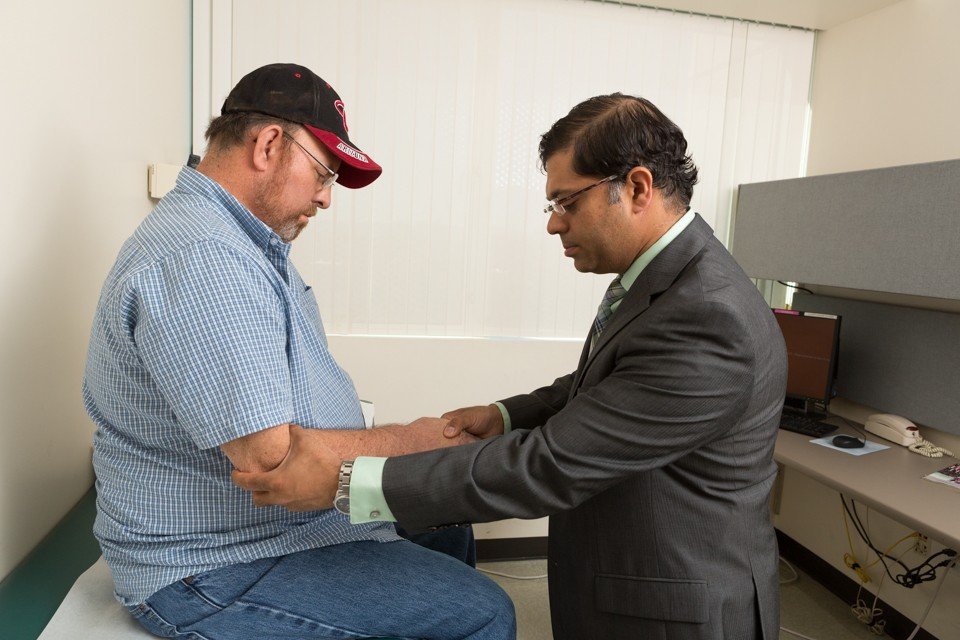
Experts Discuss Importance of Myasthenia Gravis Awareness, Research
“As many as 100,000 people in the United States are living with myasthenia gravis, and yet most people have never heard of it – including many health care professionals,” said Nancy Law, chief executive officer of the Myasthenia Gravis Foundation of America.
What is Myasthenia Gravis?
Myasthenia gravis is an autoimmune neuromuscular disease characterized by varying degrees of muscle weakness and fatigue. The condition may involve many muscle groups or be limited to certain muscles, such as those that control eye or eyelid movement, facial expression, chewing, talking, or swallowing. In severe cases, it affects muscles that control breathing.
Increased awareness of myasthenia gravis will lead to proper diagnosis, research to develop better treatments, and support for the challenges that patients and families are facing.
-Nancy Law, CEO of the Myasthenia Gravis Foundation of America
Myasthenia gravis is considered a rare disease because it affects fewer than 200,000 Americans at any given time. However, according to the National Institutes of Health (NIH), diagnosis of this disease is often missed or delayed.
“Patients with myasthenia gravis tend to have fatigue early on rather than weakness,” said Barrow Neurologist Dr. Suraj Muley. “That makes diagnosis difficult at times since a lot of patients complain of fatigue that tends to be non-specific.”
June has been designated as Myasthenia Gravis Awareness Month in an effort to educate more people about the disease.
“Increased awareness of myasthenia gravis will lead to proper diagnosis, research to develop better treatments, and support for the challenges that patients and families are facing,” Law said.
Who Gets Myasthenia Gravis?
Myasthenia gravis occurs in all ethnic groups and both genders. According to the NIH, it is more common in young adult women under 40 and older adult men over 60, but it can occur at any age. It is not contagious or directly inherited, but it occasionally occurs in more than one member of the same family.
The disease is caused by a defect in the transmission of nerve impulses to muscles. Normally, when nerve impulses from the brain travel down the nerves to the neuromuscular junction – where nerve endings meet muscle fibers – the nerve endings release a neurotransmitter substance called acetylcholine. This chemical binds to and activates many receptor sites at the neuromuscular junction, generating muscle contractions.
In myasthenia gravis, the body’s immune system mistakenly produces antibodies that block or destroy acetylcholine receptors at the neuromuscular junction. When fewer receptor sites are available, muscles receive fewer nerve signals and muscle contractions are prevented.
Diagnosing Myasthenia Gravis
These abnormal antibodies can be detected in the blood, but about 15 to 35 percent of people with myasthenia gravis do not test positive for the antibodies, according to Dr. Muley.

Neurologist
In these cases, diagnosis is largely dependent upon clinical suspicion and electrophysiological testing, he said. Barrow is one of the few places in Arizona that offers single-fiber electromyography, which measures the electrical potential of muscle cells when single muscle fibers are stimulated by electrical impulses.
Nerve conduction studies may also be helpful in diagnosing myasthenia gravis. In these tests, doctors look for specific muscle fatigue by stimulating nerves repeatedly.
Another diagnostic test involves injecting edrophonium chloride into a vein to briefly relieve muscle weakness. This drug blocks the breakdown of acetylcholine and temporarily increases levels of the chemical at the neuromuscular junction.
Imaging tests can confirm the presence of a thymoma, which is a tumor originating in the thymus gland. One half of people with a thymoma develop myasthenia gravis, while 15 percent of people with myasthenia gravis have a thymoma.
According to the NIH, scientists do not yet fully understand the relationship between the thymus gland and myasthenia gravis, but they believe the thymus gland gives immune cells incorrect instructions to produce acetylcholine receptor antibodies.
Treatment for Myasthenia Gravis
“Diagnosis can be difficult, and clinical suspicion stemming from knowledge of the disease is important,” Dr. Muley said. “Early appropriate treatment is important since these patients can worsen quickly, and it can be life threatening since respiratory and swallowing muscles can be involved. Treatment can also be fraught with serious adverse effects, and therefore appropriate diagnosis is important.”
Anticholinesterase agents can help improve neuromuscular transmission and increase muscle strength. Immunosuppressive drugs and corticosteroids, such as prednisone, may help limit the production of abnormal antibodies.

Neurologist
“Although these medications work well to improve symptoms of the disease and restore neurological function, there is interest in developing treatments that preserve this effectiveness but have a more favorable side-effect profile,” said Neurologist Dr. Shafeeq Ladha, director of the Gregory W. Fulton ALS and Neuromuscular Disease Center at Barrow.
Long-term use of corticosteroids can increase the risk of diabetes, cataracts, osteoporosis, gastric ulcers, weight gain, and bruising. Immunosuppressive medications can carry a small risk of blood or skin cancers.
Other therapies include plasmapheresis, in which the abnormal antibodies are filtered out of the blood, and high-dose intravenous immunoglobulin, in which the immune system is modified by the infusion of normal antibodies from donated blood. However, benefits of these two treatments usually last only a few weeks.
Surgical removal of the thymus gland, a procedure called a thymectomy, may improve symptoms for people who have a thymoma.
A neurologist will determine the best treatment options for each patient. With the therapies available, many people with myasthenia gravis are able to lead normal or mostly normal lives. Some cases of the disease may go into remission, either temporarily or permanently.
Myasthenia Gravis Research
Researchers at Barrow are looking at a synthetic protein that may have the potential to counteract the damage done in the muscles of patients with myasthenia gravis.
“Instead of just dampening the immune system, we think that this drug can improve the repair mechanisms in the muscle to improve the disease,” Dr. Ladha said. “Results in the lab have shown promising results, and ongoing studies are underway to continue development of the drug in hopes that it can eventually be used in combination with immunosuppressive drugs to improve the lives of patients suffering from myasthenia gravis.”
